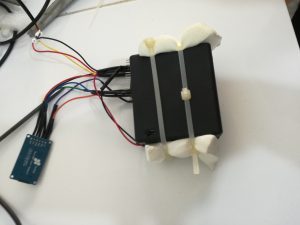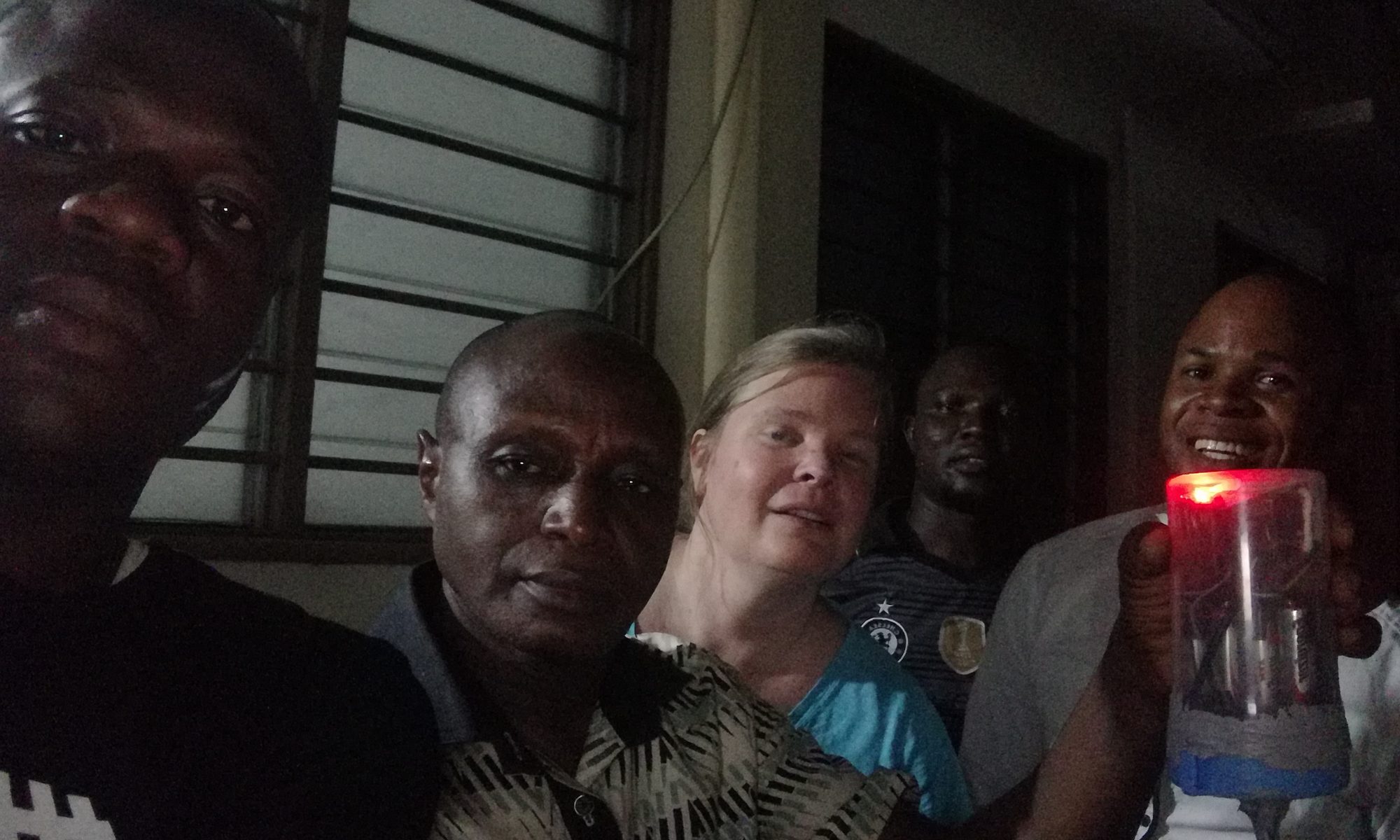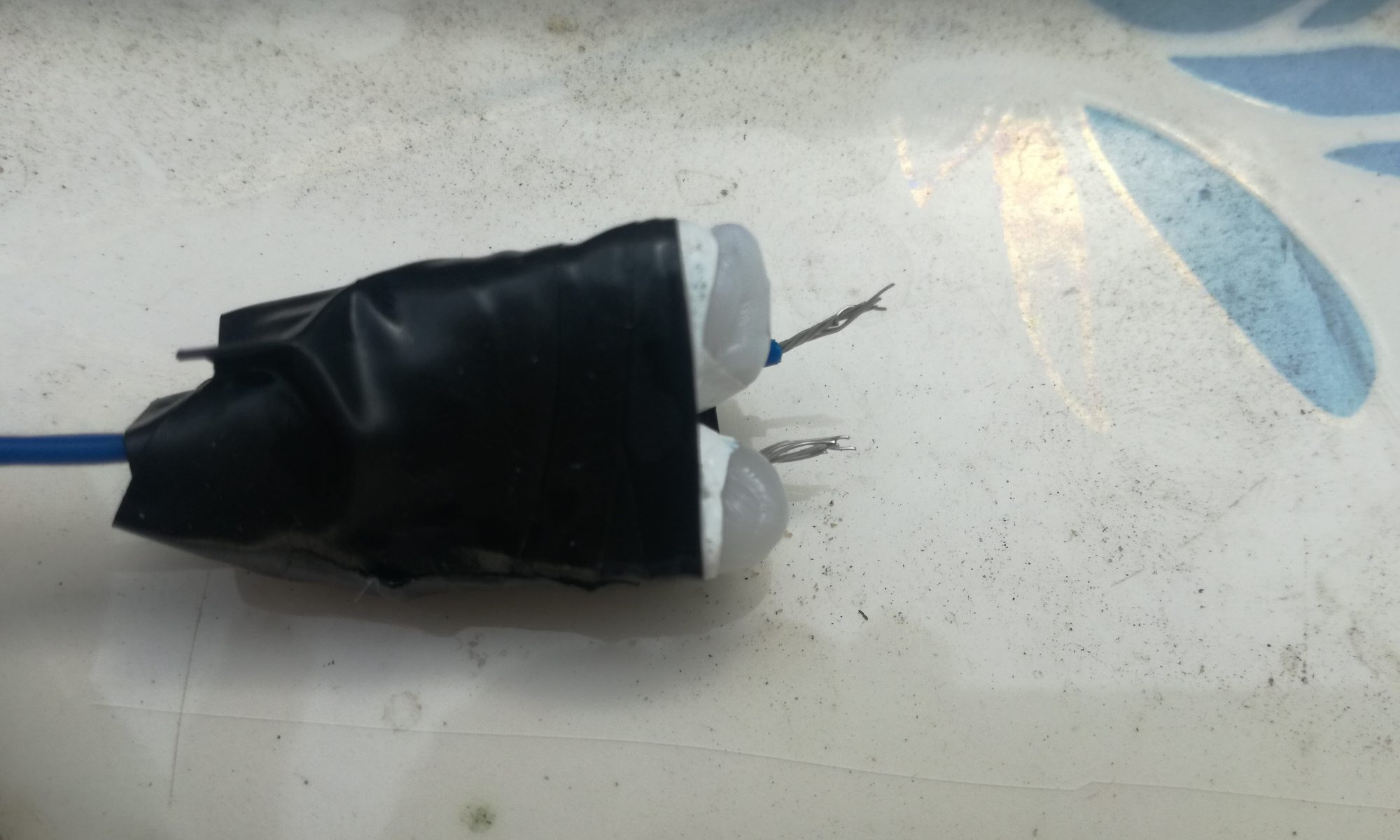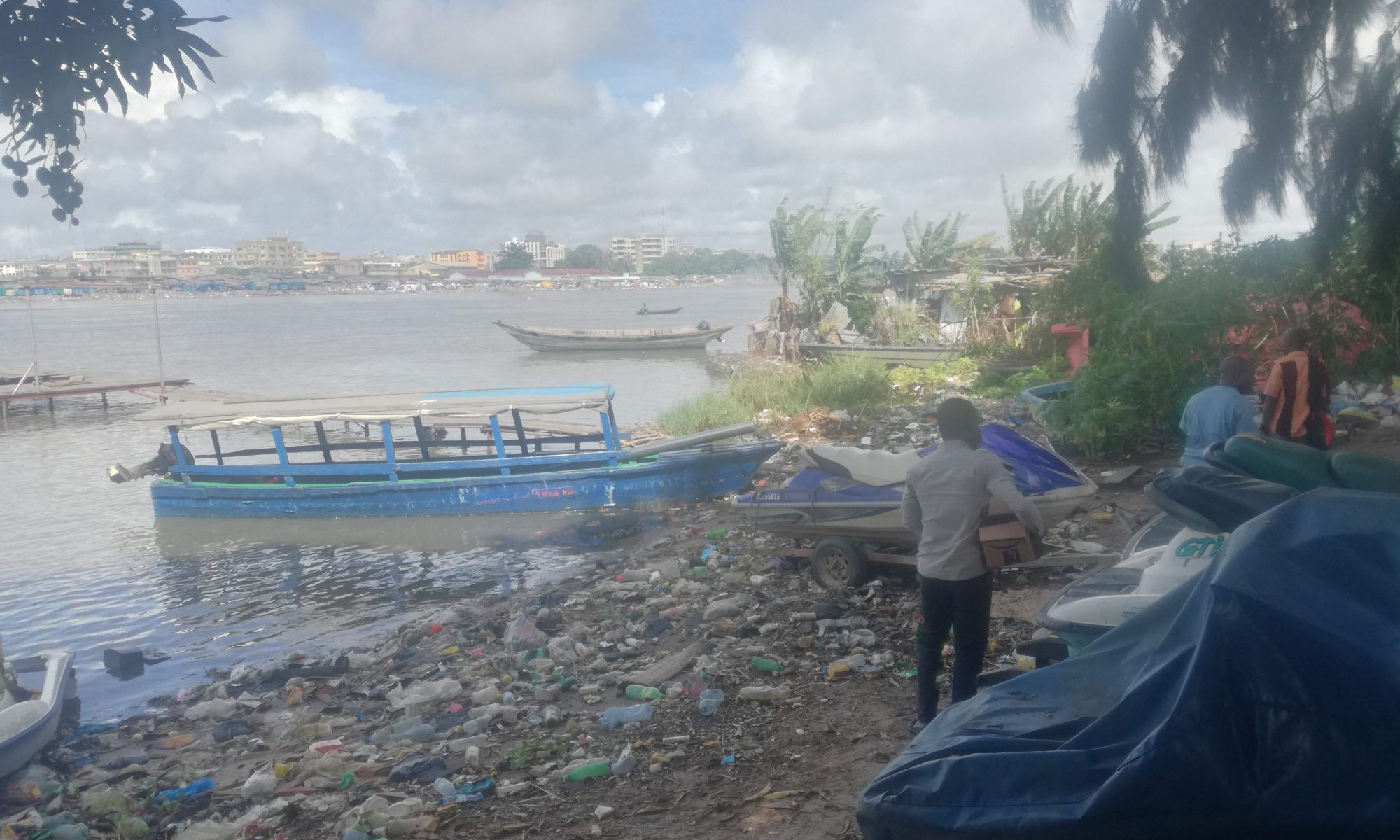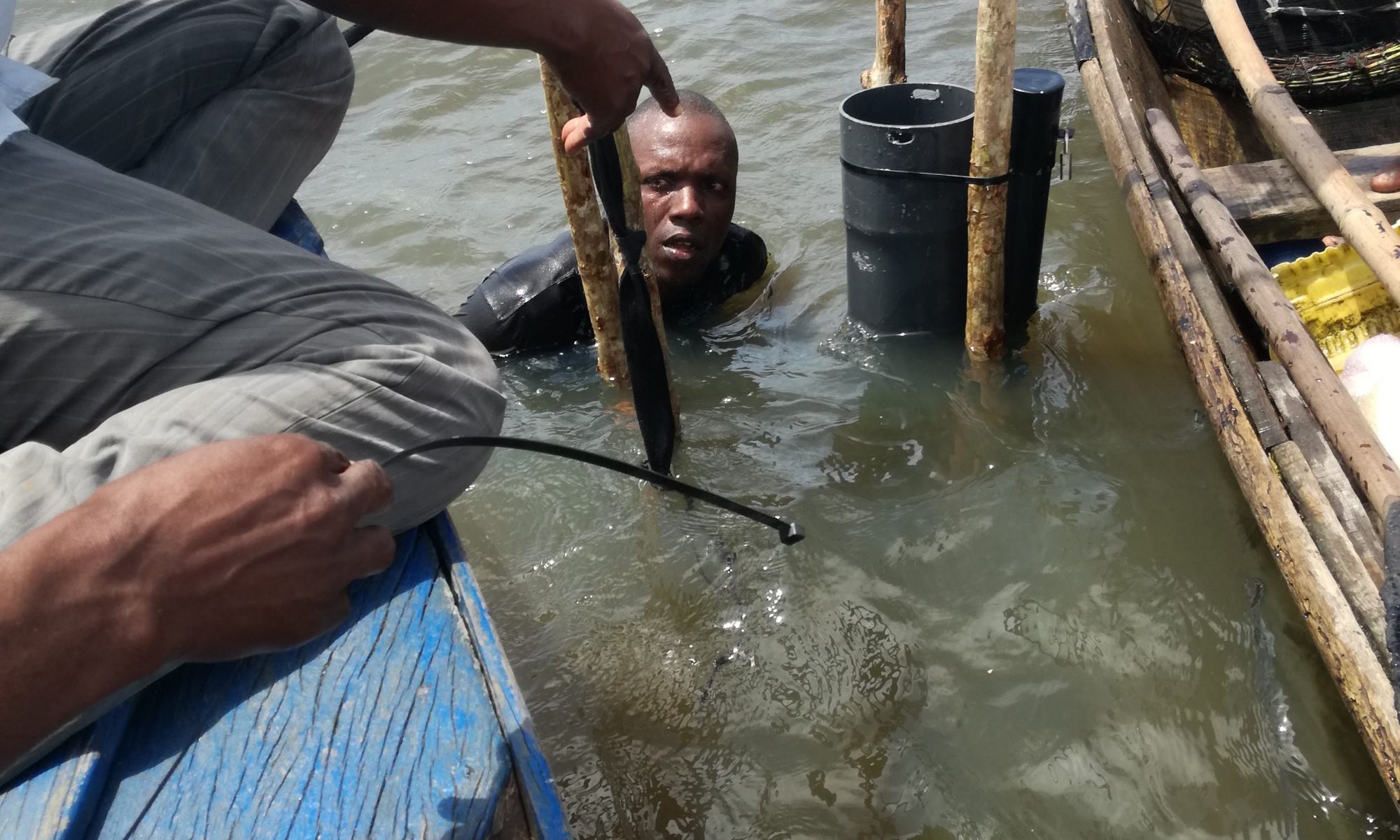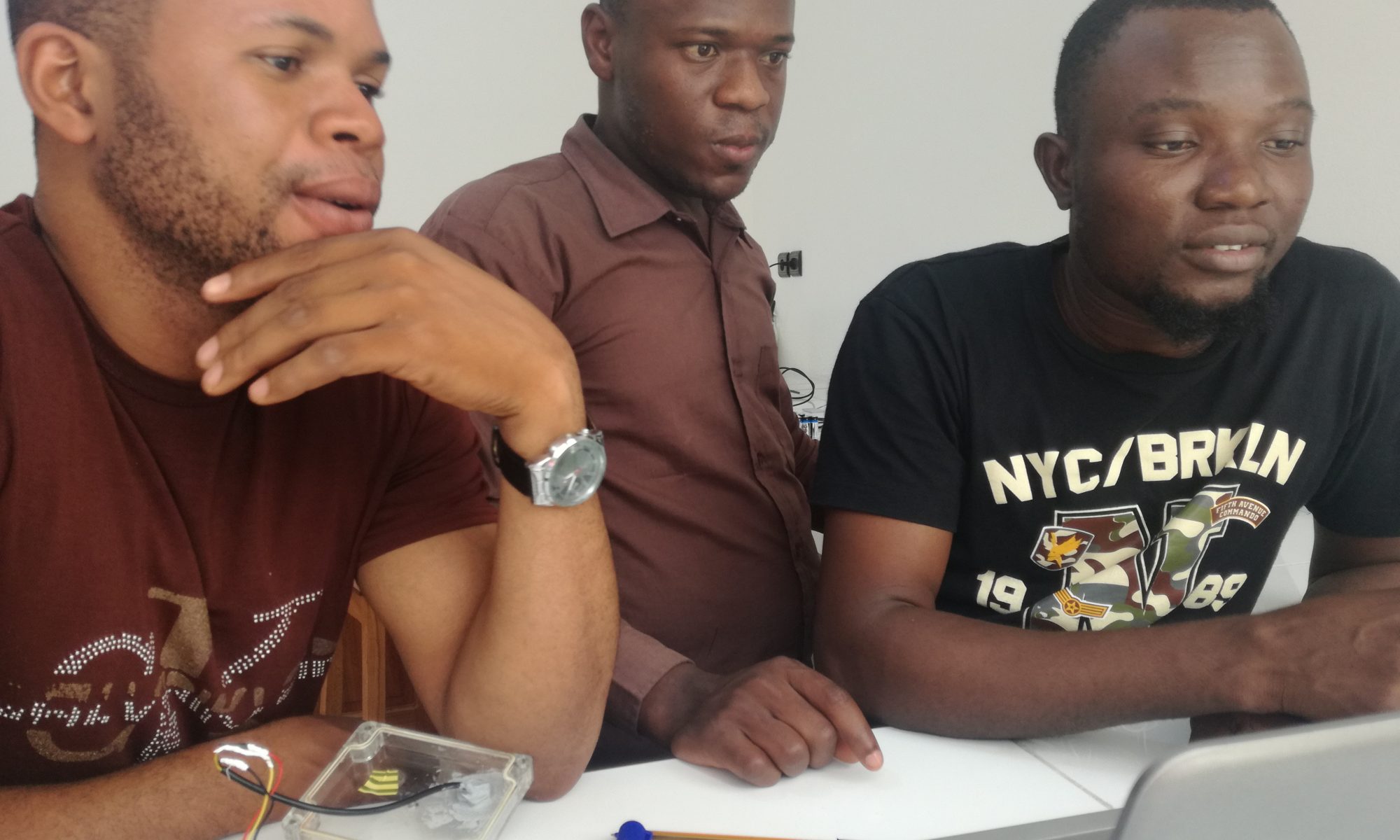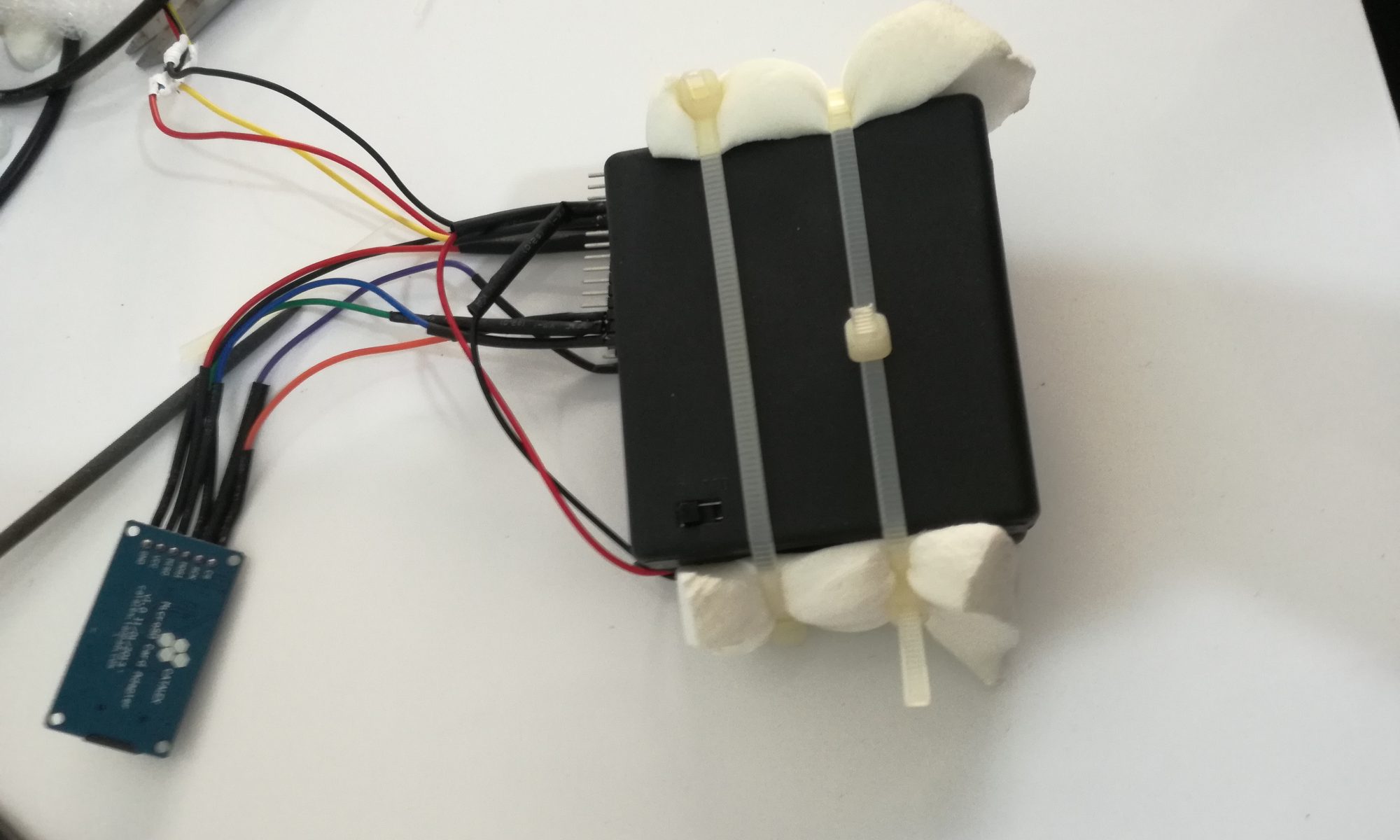Sorry, this entry is only available in Français.
(Français) Finalement, on a réussi
(Français) Salinomètre basé sur la conductivité (deux fils électroniques)
(Français) Quelques difficultés à résoudre
Adding a salinity meter to our system
Results of temperature measurements at lake Nokoué
10/11/2019
Reporter Katrijn Baetens
The team got back to the lake the 11th of November to pick up the thermometers left at the three stations. The one at the yatch club unfertunately was not sealed properly, so no data could be retrieved. Also the one at the west of the lake did not provide us with good data, here the issue was a malfunctioning of the thermocouple itself. The data logger in the center gave results for 7 days, the light was not switched on when retrieved, this sensor used rechargeable batteries.
The results of the 6 day temperature measurements:
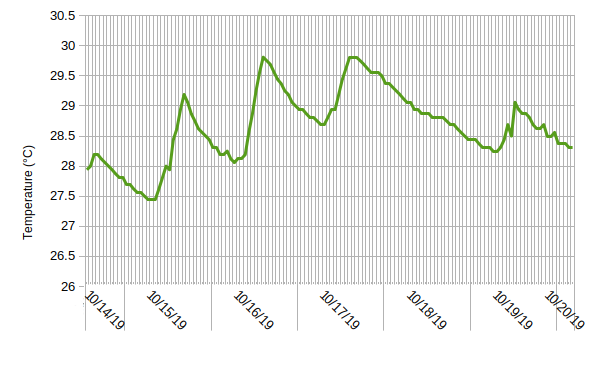
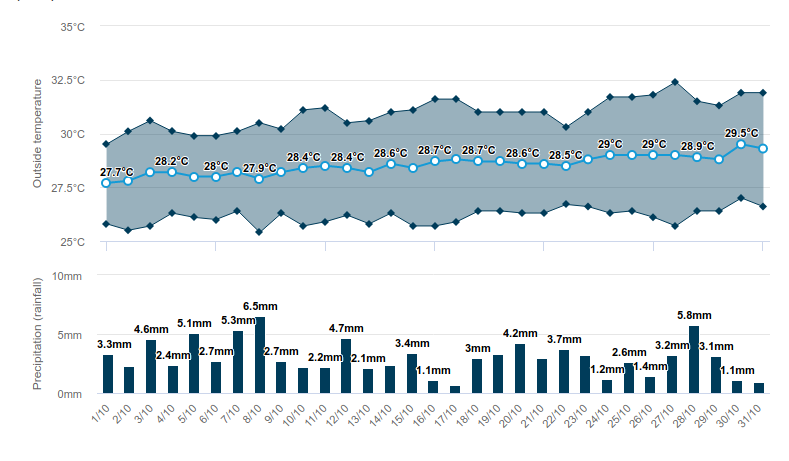
From the results it is clear that their is mostly a clear day-night cycle observed in the surface temperatures of the lake except during the night of 17 and 18 October. The average temperatures of the atmosphere in the region did not explain why there was a decrease in overall surface temperature, an increased precipitation rate could have induced the observed temperature drom. Further research is necessary.
Our first experiences with the Arduino based equipment are good, however, to compete with the professional equipment , a better solution for powering the device should be found. Also proficient care should be given to sealing up the system and making sure the sensor is properly working.
Reanalysis of the first results
Sunday 13th of October 2019
After 10 busy days full of working and adjusting our work, we finally managed to make the temperatures measured at the port presentable and in a good format.
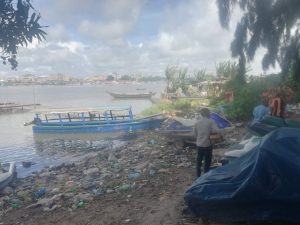
After reanalysing the data of 3 and 4 October and comparing them with the GPS shield output we can come up with the following results:
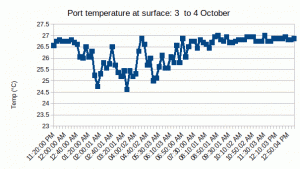
The conclusion of these measurements is that the system is too unstable to produce good results and the gps module uses a lot of battery. After removing the GPS module and stabilizing the system we found the following results:
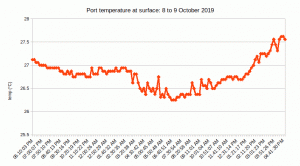
The conclusion of these measurements is that the addition of shock absorbers proved very beneficial, there was one power cut that happened during the recollection of the system. The results can be positioned in time in a reliable manner.
On monday, when we will analyse the results gathered during the weekend, we will see if these conclusions can be hold in a real experimental set up.
Putting the system to the test
Friday, October 11th 2019
Report and pictures: Medard Honfo, Katrijn Baetens
After several days of preparation, a stable system was developed so we have the confidence to put the system to the test on the lake itself. After the last verifications our team (Zacharie Sohou, Katrijn Baetens, Medard Honfo, Sylvain Amoussou) and Mr Victor Okpeitcha,an oceanographic ingeneer of IRD/IRHOB took “une pirogue”, a local type of boat, to deposit three thermometers. The stations were next to existing stations of IRD/IRHOB, this will help the validation of our system and avoid double work.
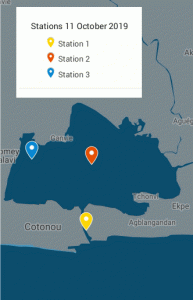
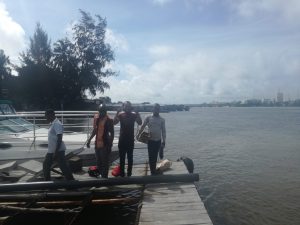
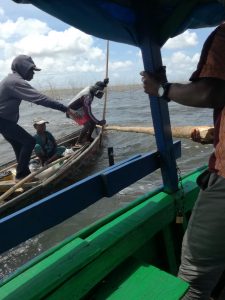
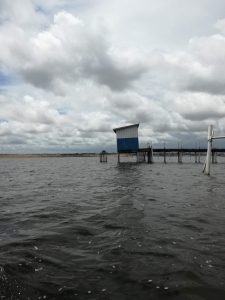
Methodology used to install the sensors:
Step 1: fix a perforated pipe in the water
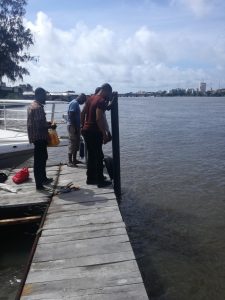
Step 2: Put the sensor inside, the sensor will float on the water
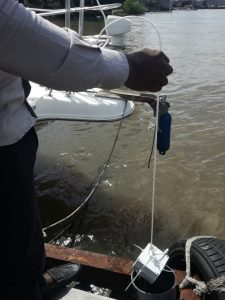
Step 3: close the system and put a lock on it
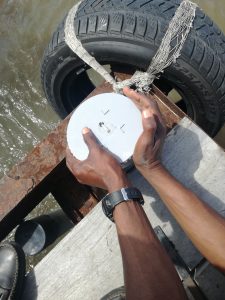
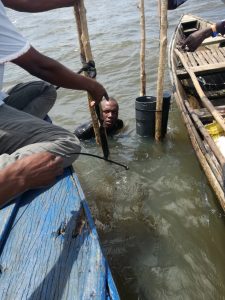
Production of more sensors and connection to the internet
Thursday October 10th 2019
Reporter: Wilfried Sintonji
Photos: Katrijn Baetens et Wilfried Sintonji
Today the students working on this project have assembled and configured their sensors independently. They also tested other types of containers made of local materials.
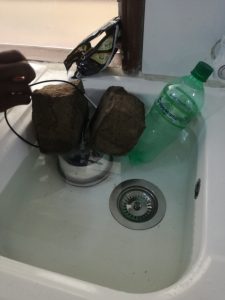
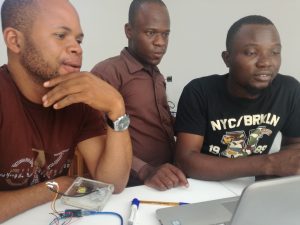
Today we finally managed to attach the module system to our sensor, unfortunately we did not arrive to make it reliable enough to attach it to the operational system.
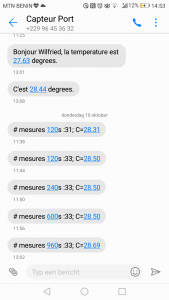
We ended the day by recollecting the second testtype we deposited at the port yesterday.
Adding a shock absorber to the system
Tuesday the 8th of October 2019
Reporter: Médard Honfo
Pictures: Katrijn Baetens
Today we kept improving the system, we noticed the data gaps originated from small shocks that the batterie containers were not able to absorb, hence we searched for different methods to add a shock absorber to the system. The pictures show some of the ideas we had, in the end we kept it simple and just added some padding to the box. In the evening we put the box back to the port for a second test.
